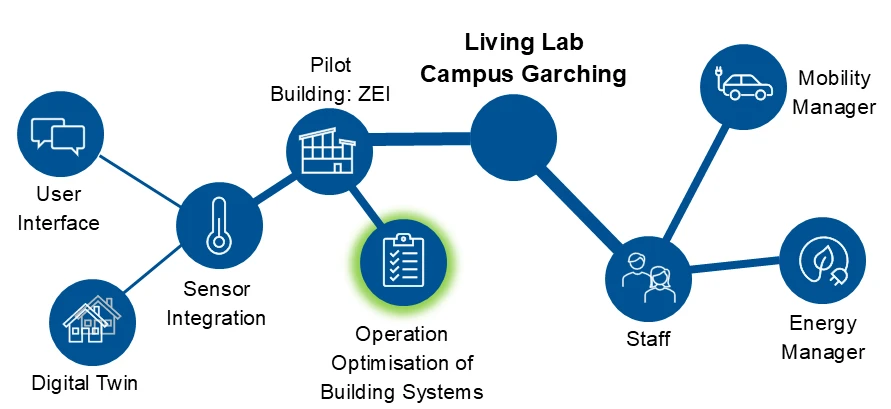Future@TUM: Sustainable Campus Garching

Project duration:
01.11.2024 - 31.10.2026
Funding organization:
Bavarian State Ministry for Science and the Arts within the framework of the University Agreement
Project partners:
Lehrstuhl für energieeffizientes und nachhaltiges Planen und Bauen
Lehrstuhl für Gebäudetechnologie und klimagerechtes Bauen
Sustainability Office der TUM
vesta sustainability consulting UG
Brief summary:
The construction and building sector accounts for approximately 30% of total CO₂ emissions. Public buildings, in particular, often exhibit inefficient operation of their technical systems, leading to high energy consumption and unnecessary emissions. Educational buildings play a special role in this context: they represent around 50% of Bavaria’s real estate assets, feature a heterogeneous user base and diverse building types, and, due to their public visibility, have the potential to serve as exemplary models.
In this context, “Future@TUM: Sustainable Campus Garching” aims to develop a data-driven living lab that integrates various disciplines of urban and infrastructure planning, including energy, mobility, and building management. This living lab brings together operations, research, and education within the university and enables innovative sustainability measures to be tested, evaluated, and taught directly in a real-world environment. By combining monitoring, data analysis, and practical implementation, campus processes are to be made more efficient and sustainable.
As part of this overarching initiative, a subproject focuses on the data-based analysis of building operations and technical systems, using the pilot building ZEI on the TUM Campus Garching as a case study. The objective is to systematically record and evaluate the actual operating conditions of the building systems. Based on these analyses, specific optimization potentials will be identified to reduce both energy consumption and emissions. These measures include, among others, the further development of operational management for heating, ventilation, and air-conditioning systems, the adjustment of control strategies, and the integration of user behavior into optimization concepts. The effects of different measures on energy efficiency and emission reduction will be quantified, providing operators with a sound basis for decision-making.
By combining data-driven analysis, practical optimization, and the integration of teaching and research, the project makes an important contribution to achieving climate neutrality across university buildings while also creating a model that can be transferred to other public buildings. In this way, the potential of energy-efficient building operation becomes visible, measurable, and actionable.
Researcher:
Rebekka Benfer, Farzan Banihashemi